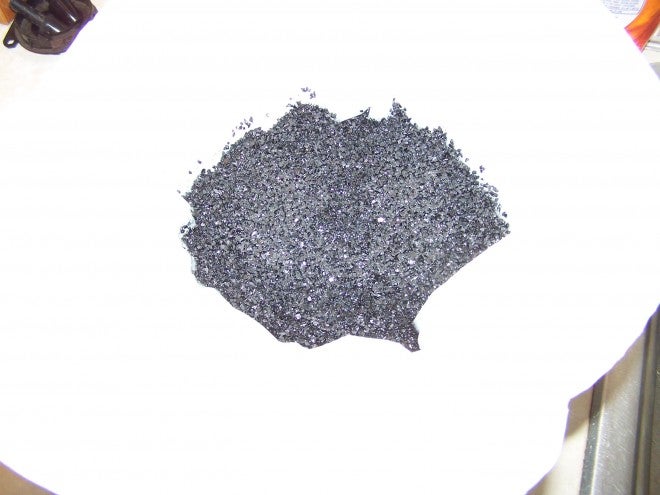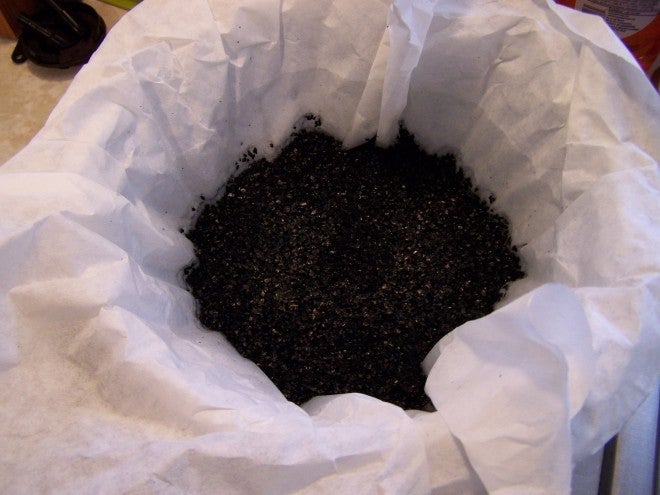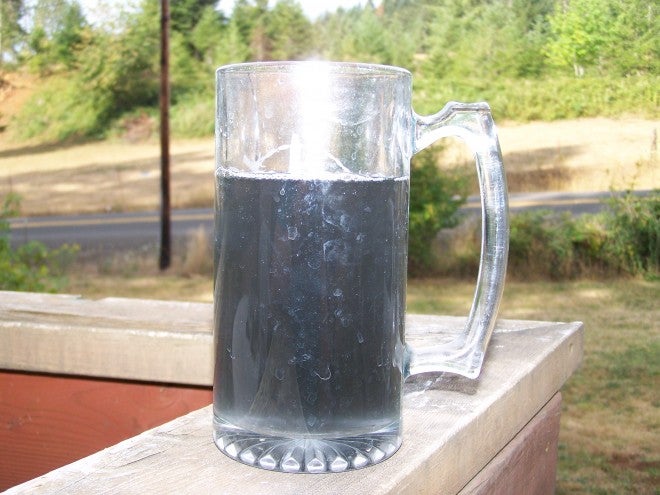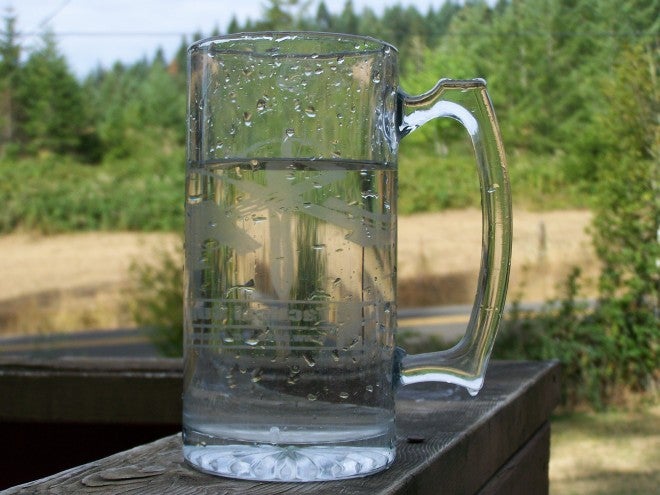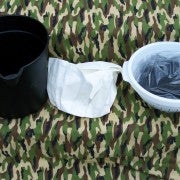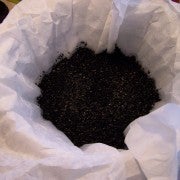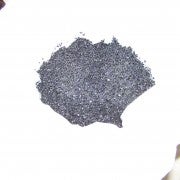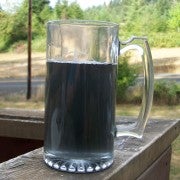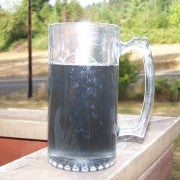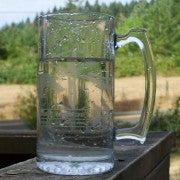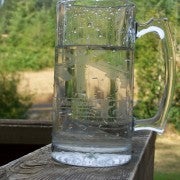Water Filtration on a Budget
Pat Cascio 09.26.13

My wife is obsessed with finding as many different ways to filter water as she can. In particular, she wants to have more than one way of filtering water in an emergency situation. It’s a good policy to always have more than one way of doing anything in a SHTF scenario. “One is none, two is one, and three is two”, as the old saying goes. You should have two or three ways to do important things, and there isn’t much that’s more important than drinking water. Without fresh, safe drinking water, you’re dead in a few days.
A fellow Oregonian by the name of Steve Baze invented and now sells one of the most economical water filtration systems I’ve seen. Steve did a lot of research on this and found that many water filters use coconut ash as their filtering element. I’m certainly no expert in the field of water filtration or purification, but my wife will devour anything she can find on the topic. To that end, she did hours and hours of research on the use of coconut ash for water filtration, and I’ll be darned if it doesn’t work. She found that many companies who produce water filters use coconut ash in their filers, and even some large cities use coconut ash to filter their water.
You need to visit the Steve Baze’s new website, Down To Earth Prepper,and you’ll find a wealth of information there, not only about his water filtration system, but all the other topics he covers on his website. Be advised however, that his website is still being built, and he’s having problems with his website host, so things a bit disorganized. Hopefully by the time you read this article, his website will be up and running properly.
Going Coconuts
The first thing I want to mention is the price of Steve’s coconut water filtration system. For only $29.95 + shipping, you can produce up to 250,000 gallons of water. Baze’s package provides a 2.9 gallon plastic bucket for catching the filtered water. He also provides a strainer with a large paper filter that sits inside of the strainer. Lastly, you get a couple pounds of coconut ash. The process is simple: just place the plastic bucket down, put the strainer on top of the bucket, pour 1/2 cup or more of the coconut ash on to the paper filter, and start pouring the water on top of the coconut ash. How easy it that?
Ok, a few hints are in order here. First of all, pour the water over the coconut ash slowly so it doesn’t overflow the paper filter. Use a small pot or a very small bucket to pour the suspect water over the coconut ash and paper filter. The first water you use “charges” the ash, and as it’s absorbing, it’ll make a “hissing” or crackling noise. Your first batch of water will be a bit gray. You can still drink it; it won’t harm you! If you want, you can pour the same water from the collection bucket, over the ash and water filter a few times until it comes out crystal clear. After that, the water you pour over the ash will be crystal clear. Once you have used your coconut ash, it becomes fully “charged” and you can use it for thousands and thousands of gallons of filtered water. Baze claims that one cup of the coconut ash will filter about 250,000 gallons of water or more.
Once you are done using the ash, you can simply allow the whole system to stand. Once it drip dries, pull the top of the filter paper together, secure or cover it with the plastic bag that it came in, and it’s good until your next use. You can also let it air dry and pour the ash back in with the other ash in the plastic bag it. Baze says he only makes about a gallon of water at a time, even though the supplied plastic buck can hold almost 3 gallons. He doesn’t want to overflow the bucket with the strainer on top of it.
If the water source you draw your water from is turbid or muddy, simply let it sit and settle for a few minutes before pouring it on to the ash. This will extend the life of the ash by allowing that really dirty water to settle to the bottom of you collection pot or bucket. As you start pouring from your collection pot or bucket, go slowly, and don’t allow that “gunk” to pour over the ash.
Testing and Usage
During my own testing of the Baze Water Filtration System, I did as instructed with the enclosed directions. Sure enough, when you pour your first glass of water through the coconut ash, it’s grayish in color. I did this half a dozen times with the same water, and each time it came out more clear than the previous time. After the 6th time of pouring the same water through the ash, it came out crystal clear. I then put a little Oregon soil in a glass of water, mixed it, and poured it through the ash. It came out clean and tasted just fine. Baze adds, if you suspect your water is contaminated with bacteria, you can add a few drops of chlorine or a drop of iodine to the filtered water. I don’t see the need to add anything, myself. The water was safe to drink after it was filtered.
A person could use the ash in a couple different ways, not just with the supplied kit. In a pinch, I can see cutting off the top of a 2-liter soda bottle, making a small hole in the bottom of the bottle, putting in a paper coffee filter, and pouring the suspect water through the 2-liter soda bottle. There are lots of different ways you can filter your water, if you have the coconut ash.
I work hard for my money, and I’m always looking for a way to save a few bucks here and there. The Baze Water Filtration System will clean-up tens of thousands of gallons of water, if not hundreds of thousands of gallons. I wish Baze would have come out with this idea when I lived near the Oregon Coast and we were getting water from three sources in our house. One was from 5 different springs on the mountain above us. When that ran too slow, we switched over to getting water from a creek, and it was always turbid. Lastly, we used an old well that was very suspect. We didn’t drink any of that water; it was only used for bathing. With the Baze Water Filtration System, we could have had safe water to drink all the time literally for pennies.
I came away pretty impressed with this filtration system. I don’t know if it will truly filter hundreds of thousands of gallons of water, but I have no reason to doubt it. Many big name water filter companies are using the same basic process. With some of those filters, however, you don’t get even a hundred gallons of clean water before you have to replace it, and they’re using the same coconut ash as a filtering media, too.
